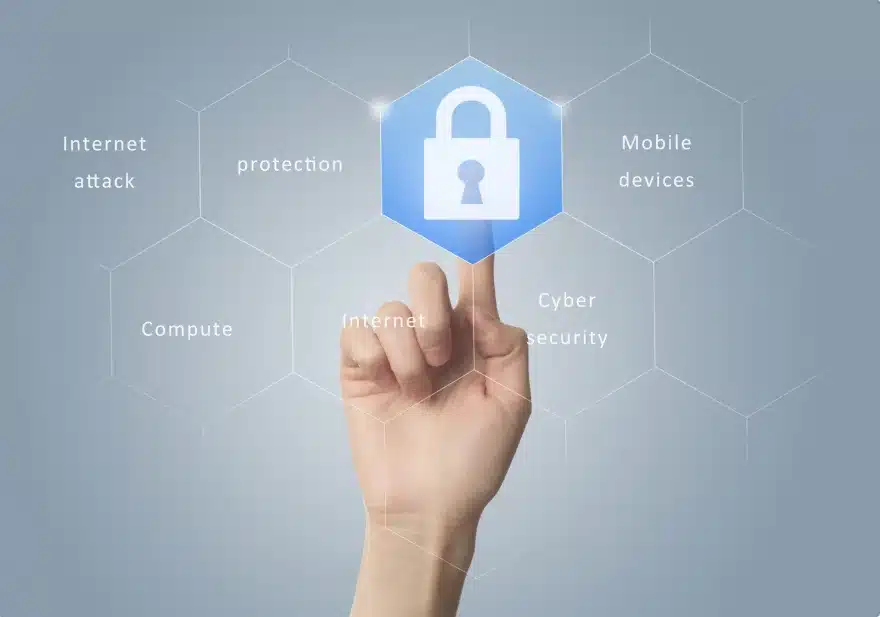In today’s digital world, the healthcare industry is increasingly dependent on technology to manage patient information, streamline operations, and provide better care. However, with the rise in digital adoption, healthcare organizations are facing a growing threat: cybersecurity risks. Cyberattacks targeting healthcare institutions are becoming more common, sophisticated, and damaging.
In this article, we’ll explore the major healthcare cybersecurity risks, the importance of cybersecurity in healthcare, and how healthcare organizations can protect themselves by implementing effective healthcare cybersecurity solutions.
The Growing Threat of Cybersecurity in Healthcare
The healthcare sector is a prime target for cybercriminals due to the vast amount of sensitive data it holds. From medical records to billing information, healthcare organizations store highly valuable data that can be exploited for financial gain, identity theft, or even blackmail. Unfortunately, the very nature of healthcare, where information is constantly being shared and accessed by multiple parties, makes it a vulnerable target for cyberattacks.
The Importance of Healthcare Cybersecurity Solutions
Securing Patient Data
At the heart of healthcare cybersecurity is the protection of patient data. Healthcare organizations are required by law to maintain the confidentiality and security of patient information under regulations like HIPAA (Health Insurance Portability and Accountability Act). A breach of sensitive health data not only jeopardizes the trust of patients but also exposes organizations to legal and financial penalties.
Cybersecurity in healthcare solutions aims to secure patient data across multiple touchpoints. These include protecting electronic health records (EHRs), medical devices, communication channels, and patient portals from unauthorized access, loss, or theft.
Protecting Healthcare Systems and Networks
Cybersecurity solutions also protect the network infrastructure of healthcare organizations. Healthcare providers often use complex systems that integrate various software applications, databases, and medical devices. A vulnerability in any part of this infrastructure can provide a backdoor for attackers to infiltrate the entire network.
Through healthcare cybersecurity solutions, organizations can fortify their network security by using firewalls, intrusion detection systems (IDS), encryption, and secure communication protocols. These technologies help prevent unauthorized access and ensure that patient data is transmitted securely between systems.
Compliance with Regulatory Requirements
With the increase in data breaches and cyberattacks, healthcare organizations must comply with a range of regulations aimed at protecting sensitive patient information.
In the United States, HIPAA sets national standards for the protection of health information, including the requirements for electronic health record (EHR) systems. Non-compliance with these regulations can result in substantial fines and reputational damage.
By implementing cybersecurity healthcare solutions, healthcare organizations can ensure they meet regulatory requirements and protect patient information. Regular audits, risk assessments, and updates to security measures help ensure ongoing compliance.
Key Healthcare Cybersecurity Risks
1. Ransomware Attacks
Ransomware attacks are one of the most common and disruptive cybersecurity risks faced by healthcare organizations. These attacks typically involve malware that locks an organization’s files or systems and demands a ransom payment in exchange for the decryption key.
Hospitals and clinics are especially vulnerable to ransomware because many rely on timely access to medical records, imaging systems, and other critical data.
In recent years, healthcare systems have seen a sharp increase in ransomware attacks. Attackers often target hospitals because they know that these organizations are more likely to pay a ransom in order to restore vital services.
2. Insider Threats
While external cybercriminals often make the headlines, insider threats pose a significant risk to healthcare organizations. These threats come from within the organization and can involve employees, contractors, or vendors who misuse access to patient data or systems for malicious purposes.
In healthcare, insider threats can range from accessing patient records for personal gain to accidentally exposing sensitive data due to a lack of cybersecurity awareness. With the increasing reliance on digital tools, the risk of accidental data exposure is rising, especially when employees access patient data through mobile devices or unsecured networks.
3. Phishing and Social Engineering
Phishing attacks are common across all industries, but they are particularly dangerous in healthcare. Attackers may impersonate healthcare staff or vendors and send fake emails, links, or attachments to steal login credentials or install malware. In healthcare, these attacks may be used to access EHRs, steal patient data, or disrupt services.
Healthcare professionals, who often receive a high volume of emails and communications daily, can be especially vulnerable to phishing attacks. These attacks can result in financial loss, data breaches, and reputational damage.
4. Data Breaches
Healthcare organizations are prime targets for data breaches, with attackers seeking to steal valuable personal information such as Social Security numbers, medical records, and financial data. A data breach in healthcare can have serious consequences, including identity theft, fraud, and the exposure of confidential medical information.
Data breaches can occur due to weak access controls, vulnerabilities in systems, or human error. Cybercriminals may target hospitals and healthcare providers specifically because the data they store is highly valuable on the black market.
5. Vulnerabilities in Medical Devices
The increasing number of Internet of Things (IoT) devices in healthcare—such as connected medical equipment, wearables, and patient monitoring devices—has expanded the attack surface for cybercriminals. Many medical devices are vulnerable to hacking, as they often lack robust security features and may not receive regular software updates.
A compromised medical device can lead to unauthorized access to patient data or even the manipulation of the device, leading to potential harm.
Healthcare Cybersecurity Solutions
To combat these risks and protect sensitive patient data, healthcare organizations must implement comprehensive healthcare cybersecurity solutions. Some of the most effective solutions include:
1. Endpoint Protection
Endpoint protection tools, such as antivirus software and EDR (Endpoint Detection and Response), are essential for securing devices that access healthcare networks. These tools help detect and block malicious activity on individual devices, reducing the risk of malware or ransomware spreading throughout the network.
2. Network Security
Firewalls, intrusion detection systems (IDS), and intrusion prevention systems (IPS) are critical components of network security. These tools help protect healthcare networks from unauthorized access and cyberattacks.
3. Multi-Factor Authentication (MFA)
Implementing MFA ensures that only authorized individuals can access sensitive healthcare data and systems. MFA adds an extra layer of protection by requiring users to provide two or more forms of authentication before accessing systems.
4. Data Encryption
Encrypting sensitive data both in transit and at rest helps prevent unauthorized access. Even if data is intercepted or stolen, encryption ensures that it is unreadable without the decryption key.
5. Security Information and Event Management (SIEM)
SIEM systems aggregate and analyze data from various sources, such as firewalls, network traffic, and endpoint devices, to identify potential threats. They provide real-time alerts and help security teams respond swiftly to incidents.
Conclusion
As cyber threats continue to grow, healthcare cybersecurity must remain a top priority for organizations in the healthcare industry. By understanding the common risks, implementing the right cybersecurity healthcare solutions, and staying proactive in threat detection and response, healthcare organizations can protect themselves and their patients from the damaging effects of cyberattacks.
Investing in healthcare cybersecurity solutions and following best practices will ensure the ongoing protection of sensitive data, compliance with regulatory requirements, and the trust of patients. As the healthcare sector becomes more digital, adopting a robust and effective cybersecurity strategy is no longer optional—it’s essential for safeguarding the future of healthcare.


